There are nearly a thousand blue plaques commemorating historical and famous people who have lived in London. The modern blue plaque was designed by an unnamed student of the Central School of Arts and Crafts in 1938 who was paid just four guineas (£4.20) for it. Each London blue plaque is nineteen inches in diameter and is crafted by ceramicists Frank and Sue Ashworth, who are based in the county of Cornwall rather than the capital.
The blue plaque scheme was begun 155 years ago in 1866 and was taken over by English Heritage in 1986. All plaques carry the portcullis symbol of the organisation and anyone can propose a subject for the honour by going to the English Heritage website. All except two of the thirty-seven boroughs of Greater London boast a blue plaque erected to a former resident. The Borough of Westminster has the most (309) followed by Kensington and Chelsea (175) and Camden (166).
The first person to be given a London blue plaque was the poet Lord Byron, who was honoured with one on a house (since demolished) in Holles Street, on the site of the John Lewis department store near Oxford Circus. The oldest surviving plaque in London is for the then Emperor of France Napoleon III in King Street, Saint James’s.
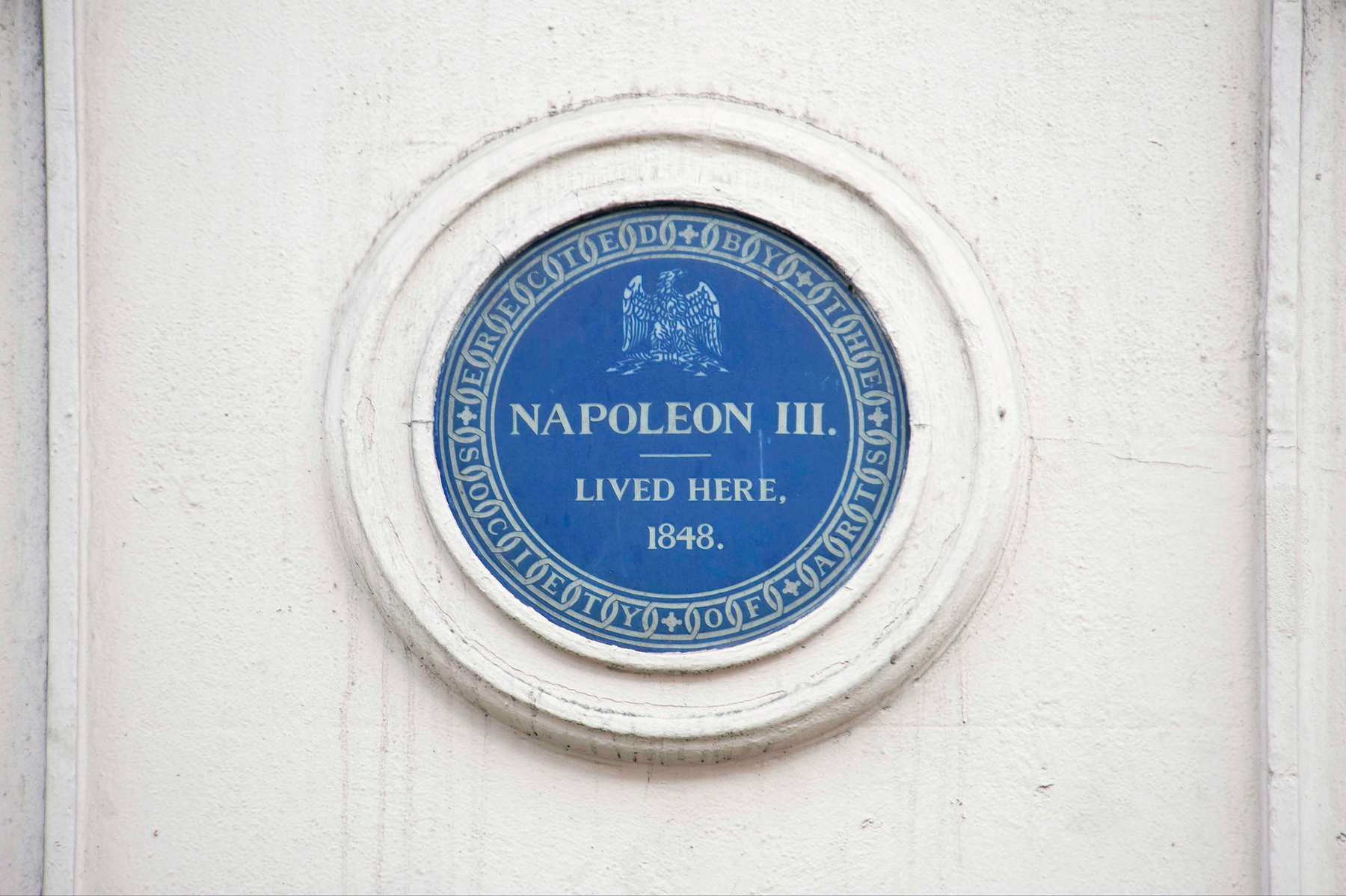 London blue plaque at King Street, Saint James’s commemorating France Napoleon III. Photo Credit: © English Heritage.
London blue plaque at King Street, Saint James’s commemorating France Napoleon III. Photo Credit: © English Heritage.
English Heritage now says that everyone who is given a London blue plaque has to have been dead for at least twenty years before it can be put up for him or, less often, her. The organisation is well aware that, for historical reasons, only fourteen per cent of those honoured with a blue plaque are women and are keen to redress this balance, with over half of all new plaques commemorating famous females.
Even Diana, Princess of Wales could not jump the queue. A plaque honouring her was unveiled in Coleherne Court, Earls Court by one of her former flatmates who lived there with her in a flat given to Diana by her mother as a twenty-first birthday present. Diana later moved up the road to the nearby Kensington Palace after her marriage to Prince Charles before her tragic death in a car crash in Paris in 1997.
Because of the twenty-year rule, there are some omissions from those honoured with a blue plaque in London. Only two of the Beatles have been given one – John Lennon and George Harrison. They are remembered on the wall of the former Apple Corps headquarters in Baker Street, which is now a real estate agency. Lennon also has his own plaque at 34 Montagu Square, Marylebone, which was unveiled by Yoko Ono who lived with him there.
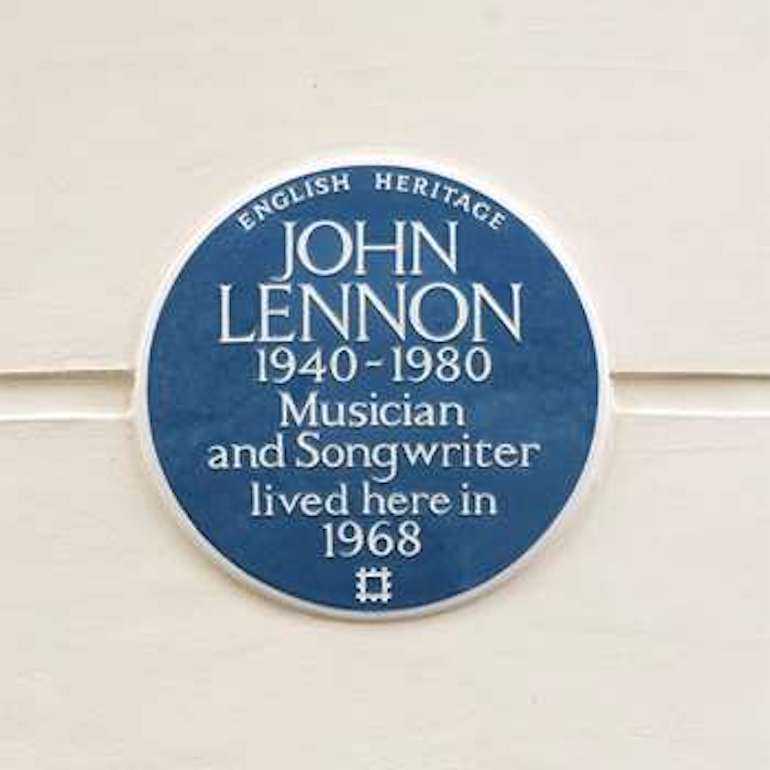 John Lennon blue plaque at 34 Montagu Square, London. Photo Credit: © English Heritage.
John Lennon blue plaque at 34 Montagu Square, London. Photo Credit: © English Heritage.
Neither David Bowie nor Amy Winehouse have yet been honoured with a blue plaque in London, although both singers have many admirers. A mural of Bowie in Brixton and a statue of Winehouse in Camden will have to serve until they are given their own plaques, which they surely will be, Bowie after 2036, Winehouse after 2031.
In attempting to redress the gender imbalance, English Heritage has recently honoured women like Noor Inayat Khan, who served behind enemy lines in wartime but was executed at Dachau in 1944. She was later awarded the George Cross for gallantry and her plaque can be seen at 4 Taviton Street in Bloomsbury.
Those who campaigned for women’s rights and are commemorated with London blue plaques include mother and daughter Emmeline and Christabel Pankhurst (50 Clarendon Road, Notting Hill) and Christabel’s sister Sylvia Pankhurst (120 Cheyne Walk, Chelsea). The formidable Pankhurst family were suffragettes, prepared to endure imprisonment as they campaigned for the right for women to have the vote.
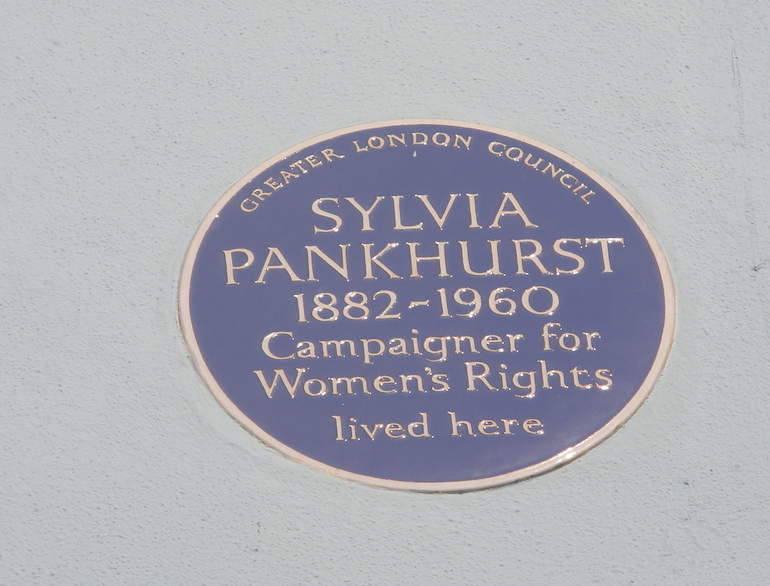 Sylvia Pankhurst blue plaque at 121 Cheyne Walk, London. Photo Credit: © English Heritage.
Sylvia Pankhurst blue plaque at 121 Cheyne Walk, London. Photo Credit: © English Heritage.
The more moderate suffragist Millicent Fawcett has a plaque at 2 Gower Street, Bloomsbury and a statue opposite Big Ben. The statue was unveiled by then Prime Minister Theresa May and was the first of a woman to be erected in Westminster. Fawcett’s sister Elizabeth Garrett Anderson was the first woman to qualify as a doctor in Britain and she has a plaque at 20 Upper Berkeley Street, Marylebone.
Women have, since the time of Florence Nightingale (10 South Street, Mayfair) also been prominent in nursing. Nightingale worked tirelessly for better conditions in military hospitals in the Crimea and, returning to Britain after the Crimean War, did a great deal to establish it as a career. Another famous nurse, much loved by the soldiers she tended to, was Mary Seacole who is remembered at 14 Soho Square.
Other prominent women honoured with London blue plaques include the scientists Rosalind Franklin, who helped Crick and Watson uncover the secrets of DNA (107 Drayton Gardens, Chelsea) and Ada Lovelace (St James’s Square, Westminster). She was the daughter of Byron and was a pioneer of computing in the nineteenth century when most women were not expected to have careers or to be independent.
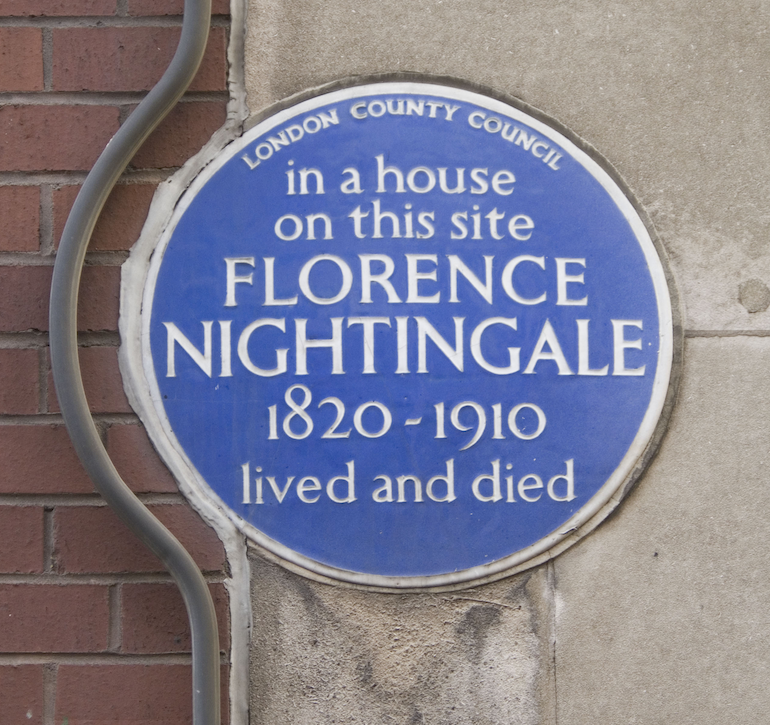 Florence Nightingale blue plaque at 10 South Street, Mayfair, London. Photo Credit: © English Heritage.
Florence Nightingale blue plaque at 10 South Street, Mayfair, London. Photo Credit: © English Heritage.
You do not have to be British to be given a blue plaque, just to have lived in London. The German composer George Frederick Handel is honoured with a plaque in Brook Street, Mayfair on the site of his home, which is now a museum, as is Wolfgang Amadeus Mozart, who lived in London as a boy and composed his first symphony at the age of eight in Ebury Street, Belgravia where he is remembered with a brown plaque, unveiled when the scheme was run by the London County Council.
Next door to Handel lived the American guitarist Jimi Hendrix, whose plaque was unveiled by bandmate Noel Redding in 1997. Hendrix died in 1970, a casualty of the rock and roll lifestyle. Other modern musicians honoured have been Bob Marley (42 Oakley Street, Chelsea) and Freddie Mercury (22 Gladstone Avenue, Feltham). Mercury’s plaque was unveiled at his childhood home in West London in 2016 by his bandmate Brian May and his sister on what would have been his seventieth birthday.
Britain’s famous wartime leader Winston Churchill is remembered with a blue plaque at the house where he died in 1965 (28 Hyde Park Gate, Kensington). Churchill had a difficult, often tetchy relationship with Charles de Gaulle whose plaque can be seen at 4 Carlton Gardens, Saint James’s where he had set up the headquarters of the Free French during the Second World War. Churchill was portrayed by Blue Badge Tourist Guide and actor Tim Hudson in a recent film about de Gaulle’s flight to London.
Many of London’s Blue Badge Tourist Guides conduct walking tours around the capital and the blue plaques they pass are often an important feature of these tours. They remind visitors of the many famous – and sometimes obscure – people who have lived in the capital and whose homes can be seen as you walk along the streets of London.
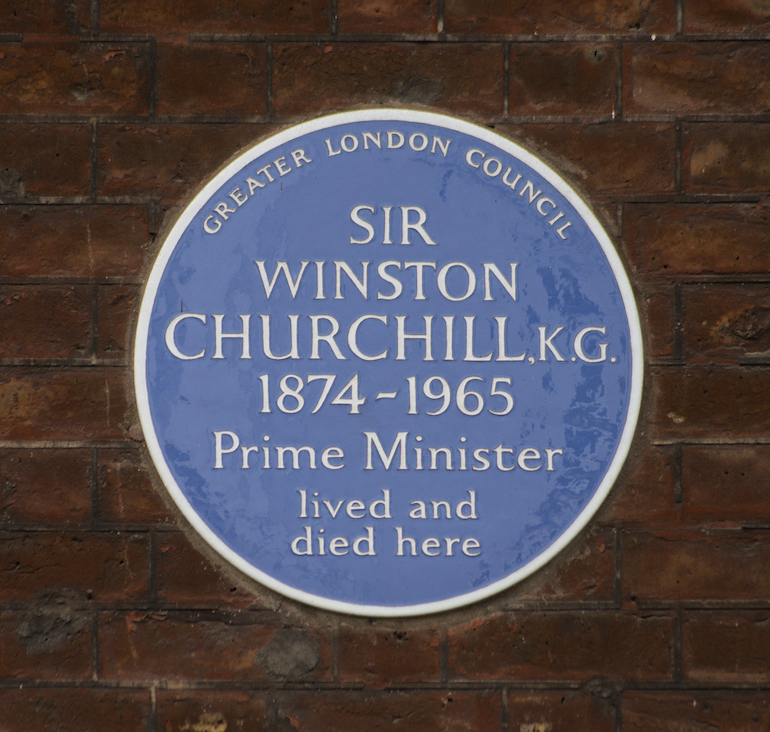 Winston Churchill blue plaque at 28 Hyde Park Gate, London. Photo Credit: © English Heritage.
Winston Churchill blue plaque at 28 Hyde Park Gate, London. Photo Credit: © English Heritage.



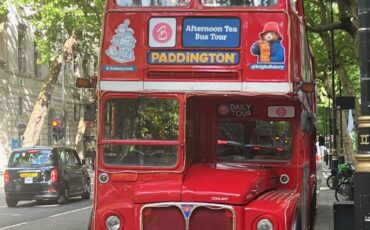
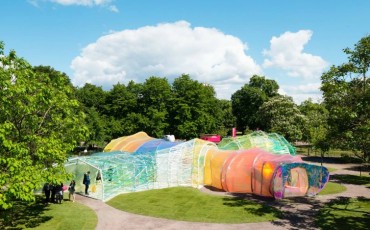


Leave a Reply